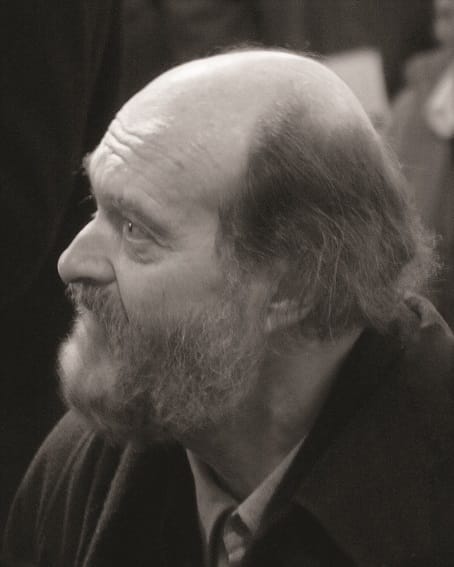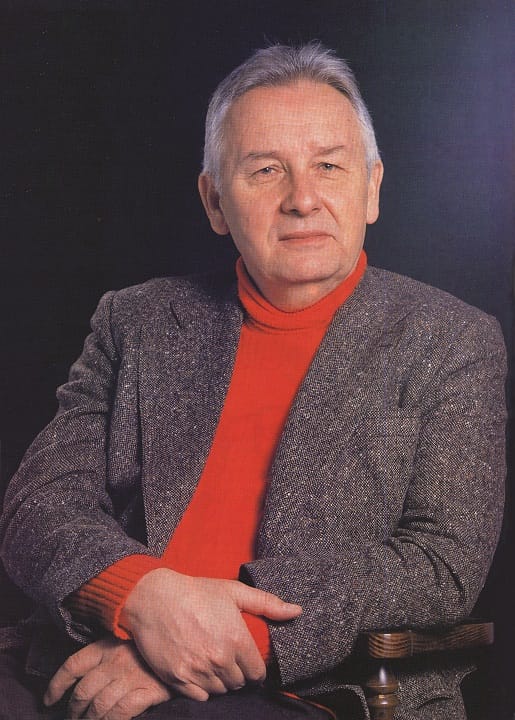Music speaks to Architecture: Górecki and Pärt
Richard England comments on two of his favourite modern composers; Henryk Górecki and Arvo Pärt
The Polish composer Henryk Górecki’s music started to attract international attention after the 1992 release of a recording of his Third Symphony – fifteen years after it was composed, with the soprano Dawn Upshaw on an Eletra Nonesuch label – became a world-wide commercial bestseller. The Symphony of the Sorrowful Songs, as it is known, is based on the libretto of a fifteenth-century lament and a prayer text that a teenage girl scratched on the walls of her Gestapo prison. Its lento music with Upshaw’s hypnotic lamenting pure-toned voice soaring ecstatically over the extended musical line provides an exhilarating, touching, deeply religious plea. This is music which, whenever I hear it, moves me intensely. It is a deeply sensuous and hypnotic composition of innate pathos, music to really touch one’s heart. The composer’s religious music Totus Tuus written to celebrate Pope John Paul II’s visit to his native land is also a mesmerizing a cappella choral piece, a near-perfect example of minimalist music with its characteristic contemplative stillness adding to its overall meditative atmosphere.
Another Górecki composition which I find extremely moving is his 1981 Miserere written in protest against the Communist government’s violence against the Solidarity Movement opposition. Again, it is an a cappella composition for a large mixed-voice choir. The theme abounds in a sacrality of singing, echoing old traditional Polish Church chants. It is interesting to note that Górecki uses only white key notes for this composition in order to produce a music which is pastoral, tranquil, and soothing. His work – based on the traditional music of his country – is always powerful, meditative, and emotional and is a music I often return to.
Another composer whose minimalist, stark music, imbued with spirituality that never fails to move me, is that of the Estonian-born Arvo Pärt. His is a music with roots deeply entrenched in Gregorian chant; a composer of extreme ascetic rigour, producing a music that is always pregnant with meditative and mystical stillness. Pärt himself describes his music as ‘tintinnabuli’, that is, like the ringing of bells. He utilizes this in his compositions Frates, Tabula Rasa, and Spiegel in Spiegel – a process that produces a music strangely both ancient and modern. Pärt always emphasises his quest that his works should communicate a rich ‘spiritual power’, which his music undoubtedly does.
Spiegel in Spiegel (mirror in the mirror) is a particular favourite of mine since it also echoes my own fascination with mirrors. The piece is a musical interpretation of the infinity of images produced by parallel facing mirrors. Pärt transposes the visual image duplications into multiple persistent tones. The music creates endlessly repeated themes, recurring as if reflected back and forth as in mirrored form. Yet, despite the repetitive theme, the music still emerges as melancholic and elegiac. Its haunting mood and manipulative structure has often been used as theme music for film and television sound tracks.
Frates (1977) is another of Pärt’s compositions which I find mesmerising, a composition replete with changing themes, from the frenetic and frenzied, to the serene and soothing. Its mathematical repetitive structure is an excellent example of Pärt’s ‘tintinnabuli’ period of composition. His Miserere (1989–1992) for soloist mixed choir ensemble and organ is a sober musical rendition of King David’s plea for mercy as recounted in Psalm 51. I love it for its silent pauses and the contrasting dramatic Dies Irae and also for the thunderous drum-rolls and the final extended long-drawn-out organ chord. Pärt has written, “I could compare my music to white light which contains all colours”. Listening to his music, I feel that the prism of light is indeed disentangled and that the multiple chromatic tones of his composition reach out to touch the very essence of my being.












